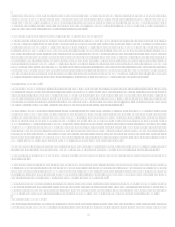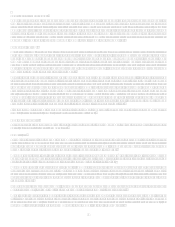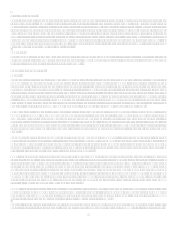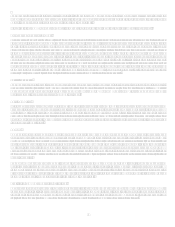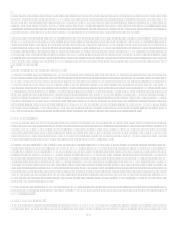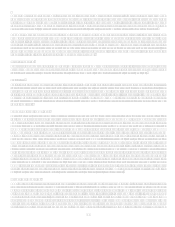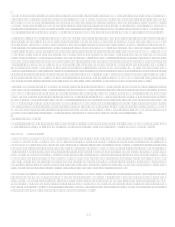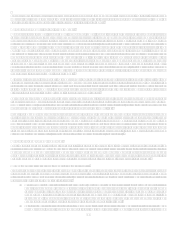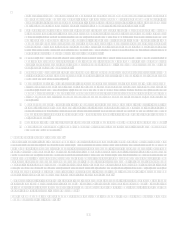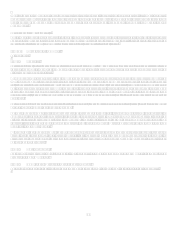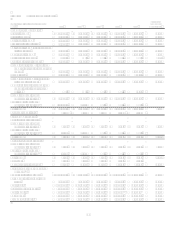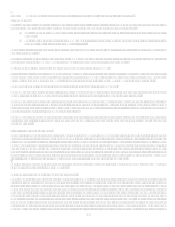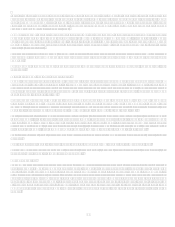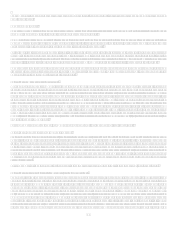Capital One 2007 Annual Report Download - page 37
Download and view the complete annual report
Please find page 37 of the 2007 Capital One annual report below. You can navigate through the pages in the report by either clicking on the pages listed below, or by using the keyword search tool below to find specific information within the annual report.15
not be sufficient to compensate us for the amount of the unpaid loan and we may be unsuccessful in recovering the
remaining balance from our customers. Particularly with respect to our commercial lending and mortgage activities,
decreases in real estate values could adversely affect the value of property used as collateral for our loans and investments.
Thus, the recovery of such property could be insufficient to compensate us for the value of these loans.
Estimates of inherent losses. The credit quality of our portfolio can have a significant impact on our earnings. We allow
for and reserve against credit risks based on our assessment of credit losses inherent in our credit exposure. This process,
which is critical to our financial results and condition, requires complex judgments, including forecasts of economic
conditions and how those conditions may impair the ability of our borrowers to repay their loans. We face the risk that we
may underestimate our inherent losses and fail to hold a loan loss allowance sufficient to account for these losses.
Incorrect assumptions could lead to material underestimates of inherent losses and inadequate allowance for loan losses.
In addition, our estimate of inherent losses impacts the amount of allowances we build to account for those losses. The
build or release of allowances impacts our current financial results.
Underwriting. We face the risk that our ability to assess the credit worthiness of our customers may diminish. If the
models and approaches we use to select, manage, and underwrite our consumer and commercial customers become less
predictive of future charge-offs (due, for example, to changes in the competitive environment or in the economy), our
credit losses and returns may deteriorate.
Business mix. We face the risk that our business mix will change in ways that could adversely affect credit losses. We
participate in a mix of businesses with a broad range of credit loss characteristics. Consequently, changes in our business
mix may change our charge-off rate.
Charge-off recognition. We face the risk that the rules governing charge-off recognition could change. We record charge-
offs according to accounting practices consistent with accounting and regulatory guidelines and rules. These guidelines
and rules, including among other things, the FFIEC Account Management Guidance, could require changes in our account
management or loss allowance practices and cause our charge-offs to increase for reasons unrelated to the underlying
performance of our portfolio. Such changes could have an adverse impact on our financial condition or results of
operation.
Mortgage repurchases. We face the risk that we may be required to repurchase mortgage loans that we sell to investors in
the event that there was improper underwriting or fraud, or in the event that the loans become delinquent shortly after they
are originated. Typically, loans are put back to originators if they experience delinquencies. Consequently, we may be
exposed to credit risk associated with sold loans. We hold a reserve against this risk, but we face the risk that the reserve
will not be adequate.
Industry practices. We face the risk that our charge-off and delinquency rates may be impacted by industry developments.
General economic environment. Economic downturns may increase delinquencies and credit losses. See We Face Risk
From Economic Downturns.
We Face Risk of Interest Rate Fluctuations
Like other financial institutions, we borrow money from other institutions and depositors, which we use to make loans to customers
and invest in debt securities and other earning assets. We earn interest on these loans and assets and pay interest on the money we
borrow from institutions and depositors. Changes in interest rates, including changes in the relationship between short term rates and
long term rates, may have negative impacts on our net interest income and therefore our earnings. If the rate of interest we pay on our
borrowings and deposits increases more than the rate of interest we earn on our assets, our net interest income, and therefore our
earnings, would fall. Our earnings could also be negatively impacted if the interest rates we charge on our earning assets fall more
quickly than the rates we pay on our borrowings and deposits. Changes in interest rates and competitor responses to those changes
may affect the rate of customer pre-payments for auto and other term loans and may affect the balances customers carry on their credit
cards. These changes can reduce the overall yield on our earning asset portfolio. Changes in interest rates and competitor responses to
these changes may also impact customer decisions to maintain balances in the deposit accounts they have with us. These changes may
require us to replace withdrawn balances with higher cost alternative sources of funding.
We assess our interest rate risk by estimating the effect on our earnings under various scenarios that differ based on assumptions about
the direction and the magnitude of interest rate changes. We take risk mitigation actions based on those assessments. We face the risk
that changes in interest rates could reduce our net interest income and our earnings in material amounts, especially if actual conditions
turn out to be materially different than those we assumed.
See Item 7 Managements Discussion and Analysis of Financial Condition and Results of OperationsInterest Rate Risk
Management for additional information.


